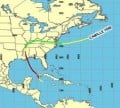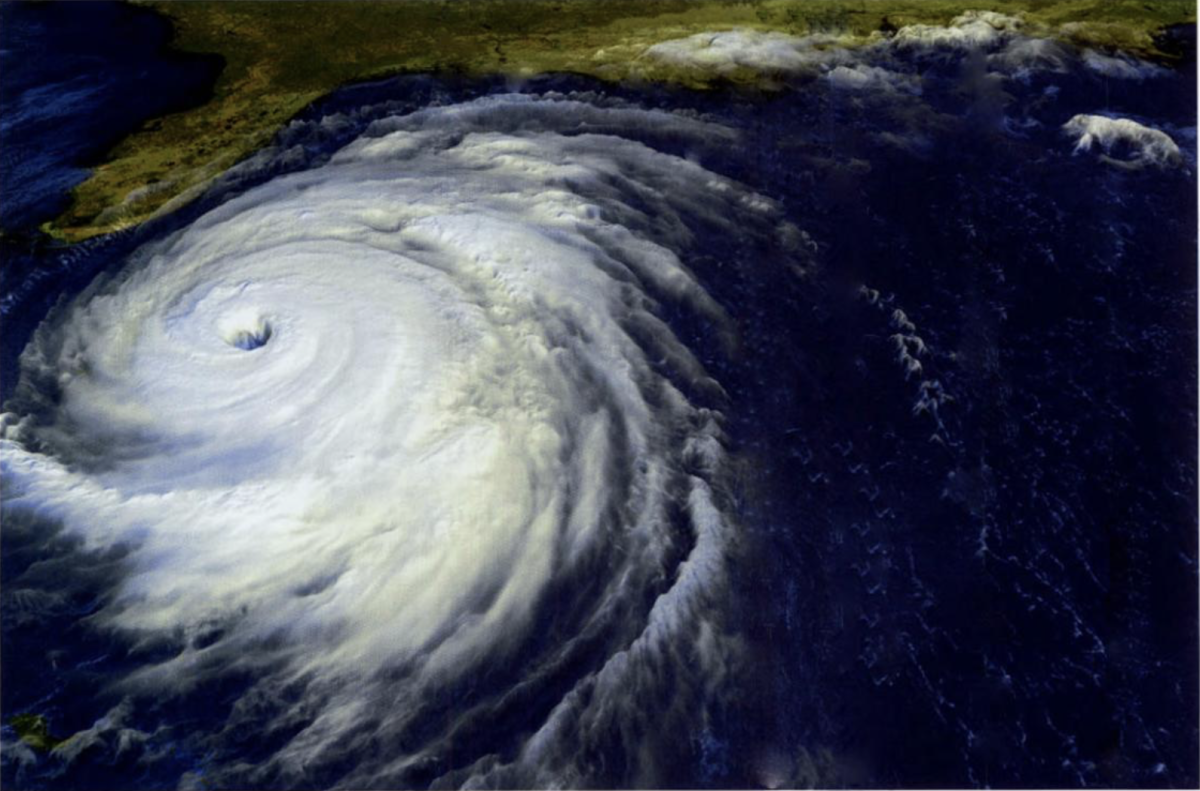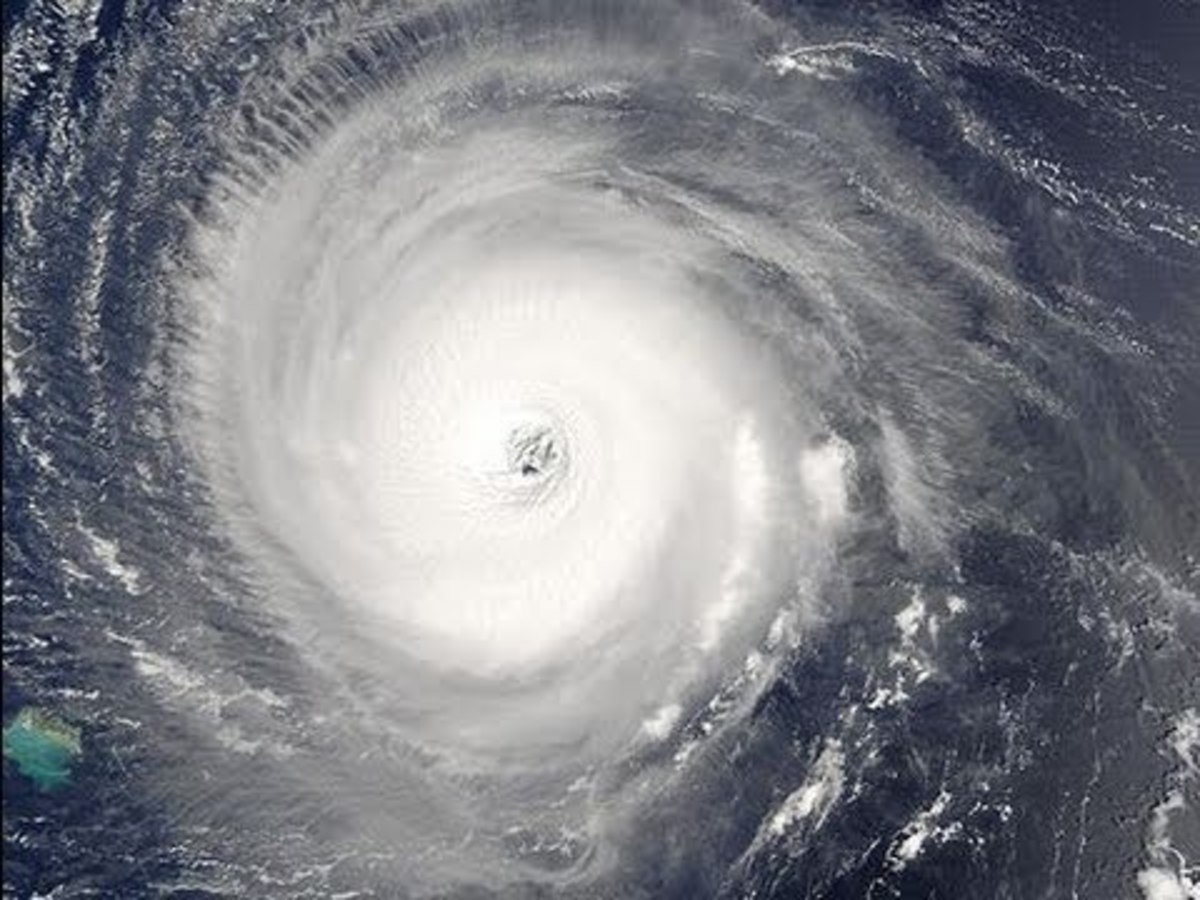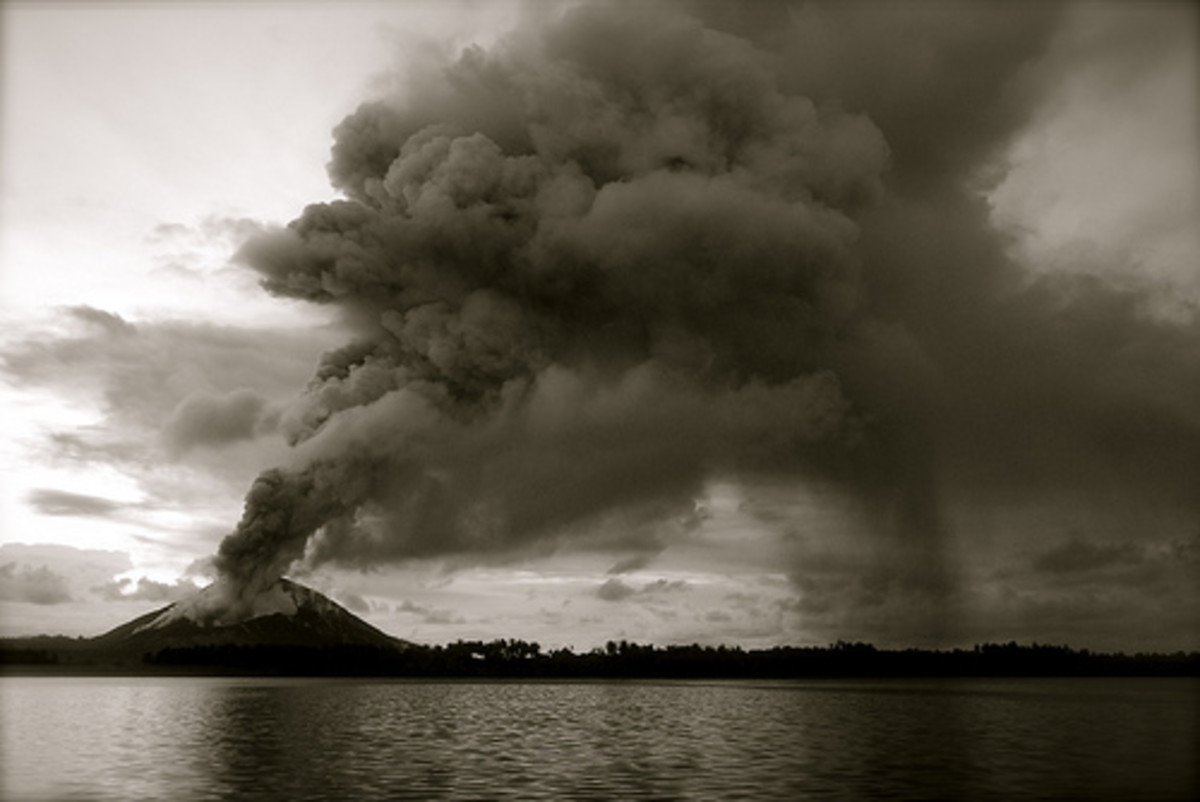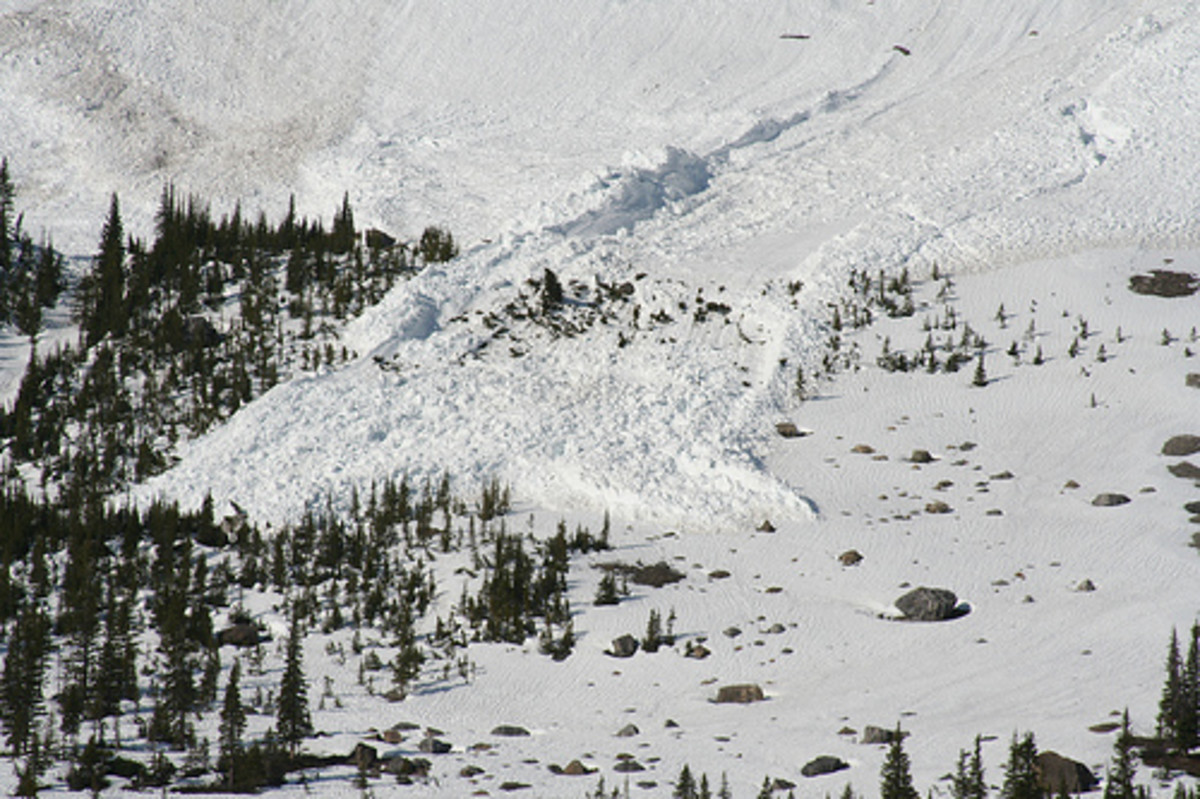Hurricane Charley
No 11 in the World's Worst Hurricanes...
Hurricane Charley was the second major hurricane of the 2004 Atlantic hurricane season, lasting from August 9th to August 15th and attaining a peak intensity at winds of 150 miles per hour, placing it in the category 4 range on the Saffir-Simpson Hurricane Scale.
Hurricane Charley made landfall on south western Florida at its peak strength, making it the strongest hurricane to make US landfall since Hurricane Andrew in 1992, twelve years before.
The hurricane storm then made a comeback, after crossing the Caribbean Sea, arriving on Cuba on Friday, August 13th, as a category 3 hurricane. The hurricane storm also crossed over the Dry Tortugas only twenty two hours after Tropical Storm Bonnie made landfall in north western Florida. This would make for the first time in history that two tropical cyclones actually made landfall on the same state within a twenty four hour range.
Charley was one of the two major Florida hurricanes to hit Florida that year, and one of four that had a direct impact on the state.
Hurricane Charley Hurricane Damage
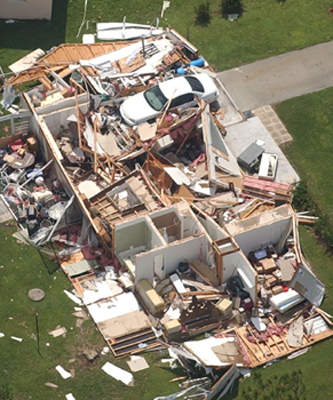
Hurricane Preparation for Hurricane Charley
Two days before the hurricane passed over Jamaica, officials there had issued a tropical storm warning, upgrading it to a hurricane warning the next day. The threat of the hurricane storm actually forced both of the country’s airports to close down while the hurricane passed, and two cruise ships were rerouted to safer waters.
The Cayman Islands also issued a warning on the eleventh, just one day before the hurricane passed near the archipelago.
In Cuba, government officials issued a hurricane watch along the southern coastline starting on the eleventh of August, two days before the island was struck by the hurricane. This was then upgraded to an actual hurricane warning on the twelfth, over thirteen hours after Hurricane Charley made landfall. The government also issued a mandatory evacuation, moving over two hundred thousand people and one hundred fifty nine thousand animals from the area expected to be hit hardest.
Another three thousand eight hundred citizens were moved from offshore islands, with forty seven thousand in Havana being transported from older buildings into safer areas. The entire power grid in southern Cuba was turned off in order to avoid any major complications.
In Florida, then Governor Jeb Bush issued a state of emergency while the NationalHurricaneCenter issued warnings to the Florida Keys, as well as to the area between Cape Sable and the mouth of the SuwanneeRiver just one day prior to Charley’s passage through the state.
Nearly two million people in Florida were urged to evacuate, including eleven thousand in the Keys and three hundred eighty thousand in the TampaBay area.
Incredibly, many residents chose to stay in their homes rather than going to shelters, however, these being Floridians, they did stock up on supplies and board up windows to minimize potential damage.
Hurricane Charley Track
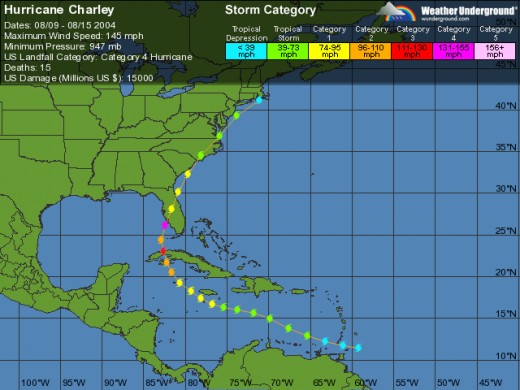
Hurricane Tracking for Hurricane Charley
Hurricane Charley began as a tropical wave moving away from the west coast of Africa on the fourth of August, organizing quickly in the Atlantic Ocean, and continuing to develop as it moved towards the Lesser Antilles, becoming a Tropical Depression Three on the ninth of August. The threat to Barbados was actually rather minor, and the hurricane storm quickly moved into the eastern Caribbean Sea and being named Tropical Storm Charley on the tenth of August.
The hurricane storm then moved west by northwest, becoming a category 1 hurricane on the eleventh, just south of Kingston, Jamaica. The core passed forty miles southwest of Jamaica, affecting the island on the eleventh and on the twelfth of August, then reached category 2 status just as it passed north east of Grand Cayman.
The storm became a major hurricane just before making landfall in Cuba and weakened over Havana with wind speeds of one hundred ten miles per hour.
Hurricane Charley then moved north by northeast, towards the coast of Florida, building strength and making landfall near the island of Cayo Costa as a category 4 hurricane.
The hurricane storm weakened considerably while passing over Orlando on August 13th, then went back into the Atlantic Ocean near Daytona Beach on August 14th as a category 1 hurricane. After a brief pass through southe astern South Carolina, Hurricane Charley finally passed back into the ocean near Virginia Beach on the fifteenth, became extratropical, and continued to lose strength until finally being absorbed by a cold front on August 15th near Massachusetts.
Hurricane Damage for Hurricane Charley
The total direct casualties of Hurricane Charley include ten deaths in the US, four in Cuba, and one in Jamaica. Unofficial reports suggest hundreds injured and twenty indirect deaths within the US. Total property damage is estimated at fifteen billion dollars US, making Charley the second costliest hurricane in the US, becoming the fifth costliest after Hurricane Katrina and Hurricane Wilma in 2005, and Hurricane Ike in 2008.
Hurricane Charley Aftermath and Hurricane Recovery
The ultimate effect of Hurricane Charley was that then president George W. Bush would declare Florida a federal disaster area. A precedent was set, and FEMA would open four disaster recovery centers in the state.
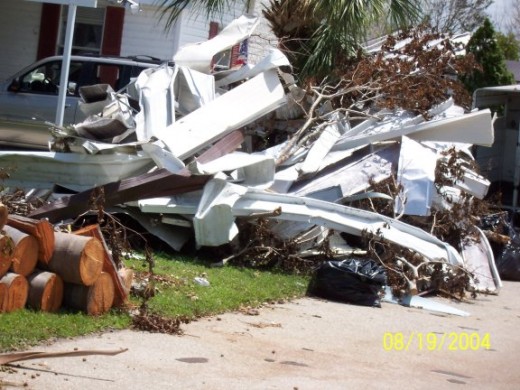
This hub brought to you...
by Julie-Ann Amos, professional writer, and owner of international writing agency www.ExquisiteWriting.com
Why not create your own HubPages? It's fun and you can make revenue from Adsense and other revenue streams on your pages. JOIN HUBPAGES NOW
This work is licensed under the Creative Commons Attribution-Non-Commercial-No Derivative Works 3.0 Unported License. To view a copy of this licence, visit http://creativecommons.org/licenses/by-nc-nd/3.0/ or send a letter to CreativeCommons, 171 Second Street, Suite 300, San Francisco, California94105, USA.


